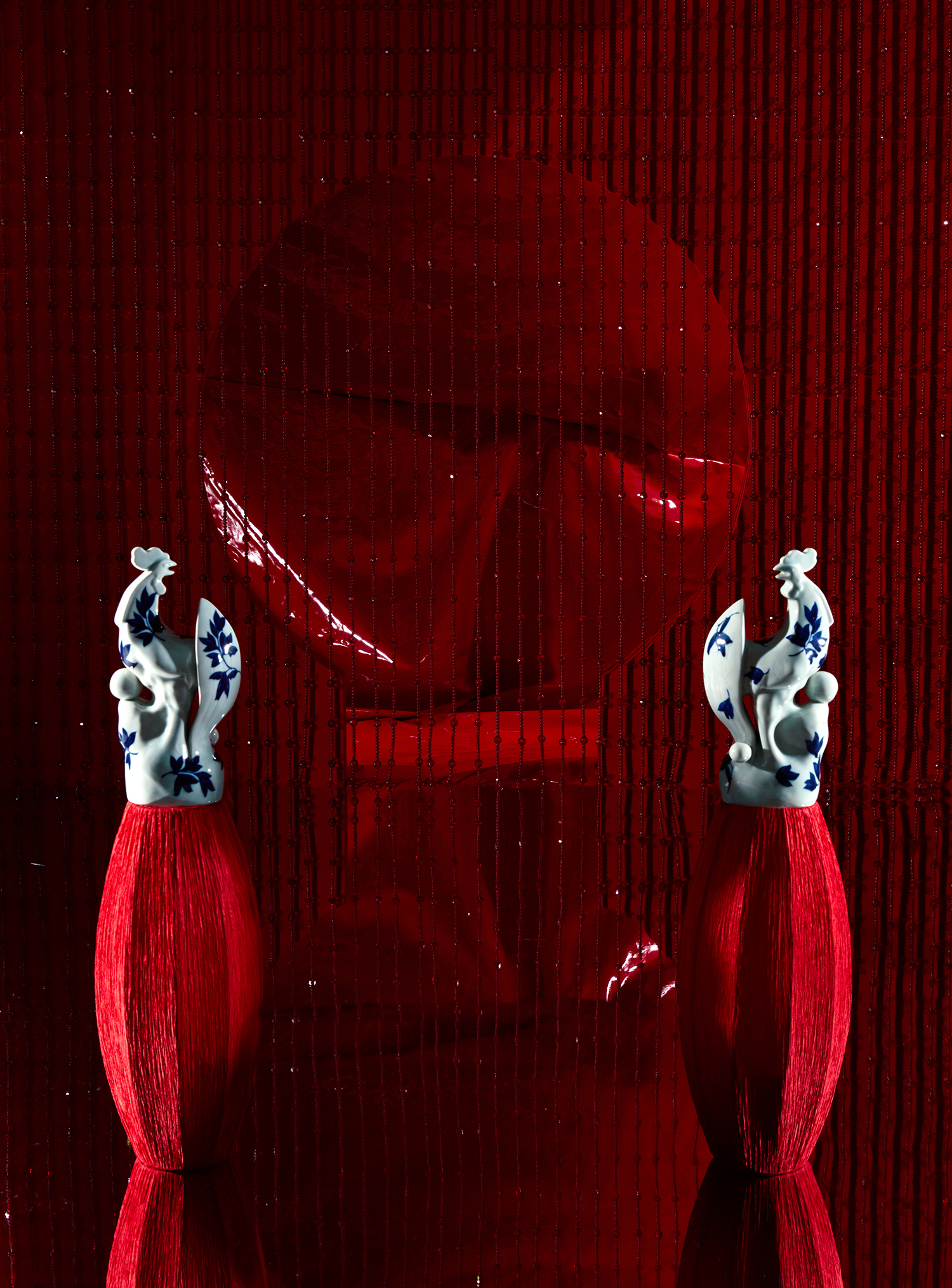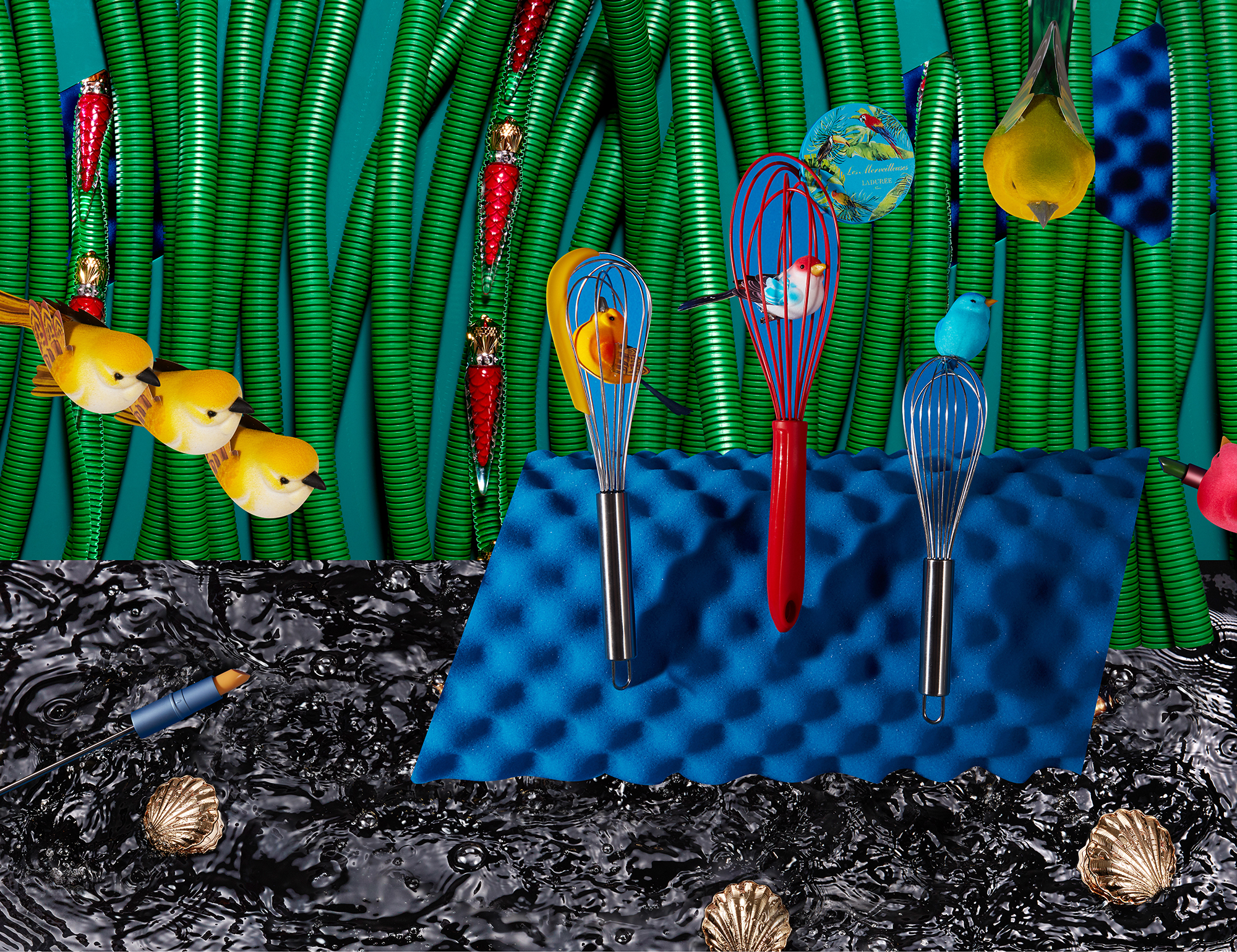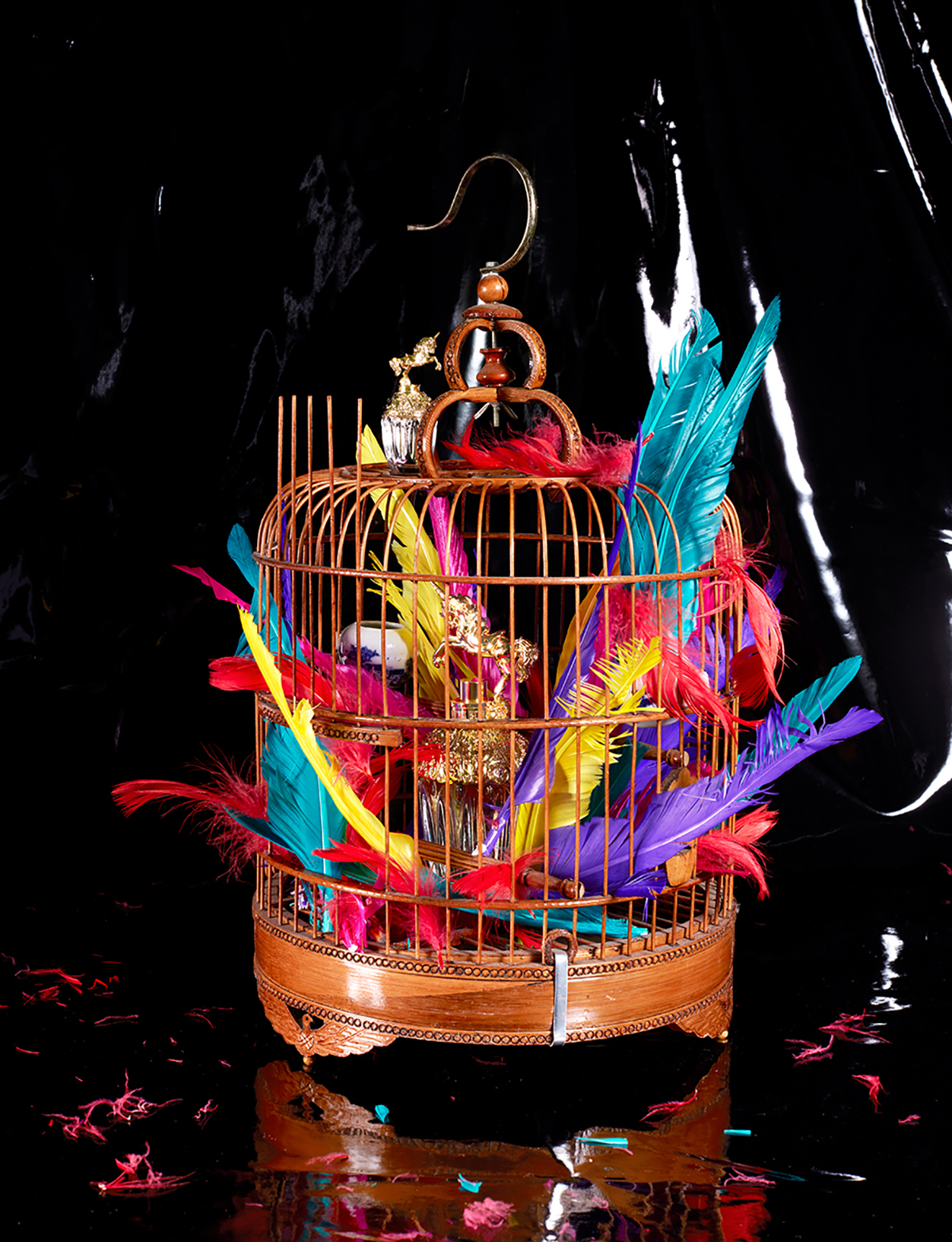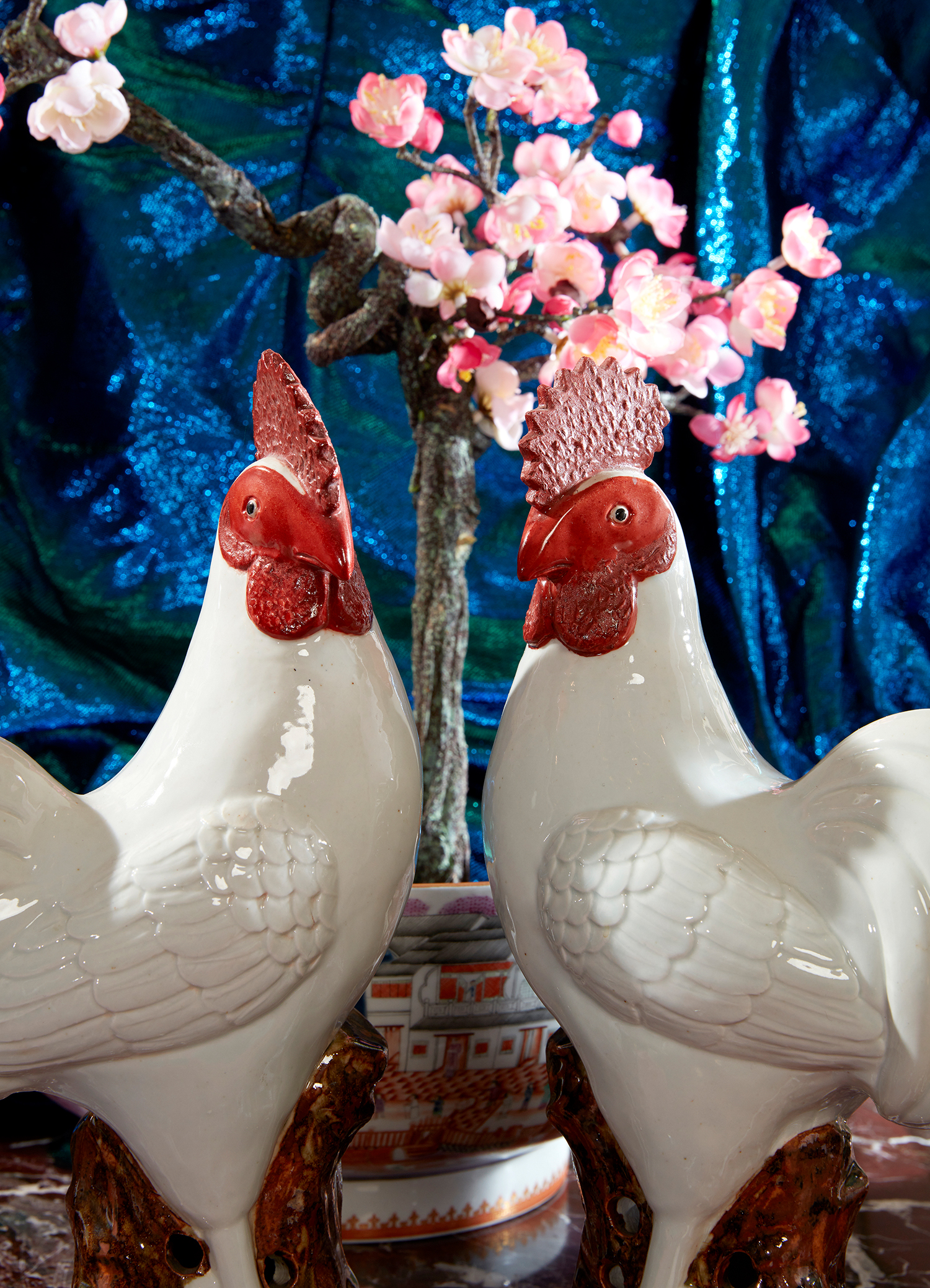This spring, VICE partnered with Fotografiska New York to present New Visions, an exhibition showcasing 14 emerging photographers from around the world who are changing the way we see. To highlight the work beyond the museum, we asked 14 of our favorite, fresh voices in culture to respond to the photos in writing. Here, Asian-American arts writer Eda Yu . converses with Shanghai-based photographer Zhongjia Sun. Read more from the New Visions series here, and learn how to visit the show at Fotografiska New York here.
When I met Shanghai-based photographer Zhongjia Sun at a cafe in Brooklyn in late February, she should have been back home by then. But because of the coronavirus outbreak in China, she was stuck in New York. It was a gloomy day, but Sun dressed to contradict that, wearing an oversized, colorblocked jacket that enveloped her small frame.
As a photographer, Sun underlines the artistry in advertising. While much of her work is commercial, —recent campaigns were featured in Elle Men and Marie Claire—she always maintains significant artistic freedom, reframing traditional advertising with a surreal, subversive lens. Take her advertisement for the brand Le Fame: A bright green chameleon perched on forest-green stairs in a dark, velvet-lined room reaches for a shiny piece of jewelry. Rather than reading like a product, the earring becomes the focal point of an absurd still life.
What's most striking about Sun’s photos are her meticulously considered compositions: Unexpectedly placed objects or satisfying shapes tease out a deeper meaning than what the eye notices at first glance. Each element is precisely folded, balanced, or positioned—showing an intentionality that offsets the almost-chaotic energy of her images. Unsurprisingly, set design was Sun’s first love. She studied film in undergrad before earning her MFA in photography from Parsons School of Design. In practically all of her shoots, the set is the centerpiece, itself a character rather than just a background. And, increasingly, she is infusing those sets with cultural references that imbue her own identity into her work.

This interview has been edited for length and clarity.
EDA YU: You’ve said before that advertising is one of the main themes in your work. How does that come across in your image?
ZHONGJIA SUN: I want to subvert the still life in consumer culture. I’ve always liked watching advertisements. They’re pretty cool, actually—a lot of them aren’t very dull or very shallow. But sometimes I want to comment more and bring some artistic elements to these advertisements. But if there are any clients that want me to shoot these boring advertisements, I won’t do it. I want to put myself into it.
When making ads, do you ever feel torn between saying what you want to say in it, and fulfilling what the client is asking for?
So far, I feel like I’m really lucky because all my clients have been really good about letting me do what I want. It’s basically like, if I want to do this, they’re happy with it, so I haven’t really felt that. I recently shot commercial work for La Mer China. Before I shot it, I thought it would be a really boring, really commercial advertisement. But then the director asked me to put what I did for all my other works with their products. He was really nice. During the shoot he even asked me, “Do you feel satisfied?” [He told me] to put [my] own artistic part into very commercial work.
My favorite projects of yours are the ones in which you take pieces of Chinese culture and place them with everyday objects, like you did in this one for Numéro China . How did you bring all that together?
That [Numéro spread] was actually my first editorial work, about one year ago. That’s how I started. That issue of Numéro was the China issue—they have a theme for each issue. So the editor asked me to create a series of work about Chinese culture. And that’s how I came up with the idea of using mundane, everyday objects and just putting them together—like what I did for my personal work, Sparkling Tea.

Do you usually bring identity-focused aspects to your editorial work too?
I actually feel an urge to bring these cultural aspects to my works. I really want to. Before this shoot, I didn’t really do any projects rooted in my culture. Recently, I’ve been asking myself why. I think that it’s really weird that I didn’t put any cultural things into my personal work before. Now I think I should bring more of these cultural elements to my projects.
There’s also more space right now for people to want to make work like that.
Yeah, I feel like I have the responsibility to do this. Because a lot of people see my work. I mean, either from here or from China. I think they like it and they want to see more and more images about their own culture.
Even in China? Are a lot of the advertisements there still really white-washed?
Yeah, but I think right now it’s a [turning] point. That’s why I feel like it’s my responsibility. It’s my generation. We don’t like to see all of our ads featuring white people.

It’s really interesting to think about, because every time I go back to Asia, I notice that all of the advertisements are white people. And it’s so weird, because we’re in a country made up almost exclusively of Asian people.
And also the food in advertisements. All the food that I see being portrayed in magazines are like hamburgers, Coca-cola, spaghetti. There is not any Asian food being portrayed, even in Asia. Or in any mainstream magazines.
Where do you draw inspiration from for your more surreal pieces?
My inspiration is from everywhere, actually. Anything. Maybe from the conversation we had. Or I just walk on the street. I take a lot of pictures every day and post them on my Instagram story. So, it’s like my sketchbook. I’ll look back at these archived images and maybe pick one image I like and think, “How can I do this? How can I develop it into a different image or different series?”
Shifting a bit to the work you’re exhibiting at Fotografiska, I want to talk a bit about your piece with the two roosters. I know they’re part of the Chinese zodiac and are meant to represent prosperity. What do they mean in your image?
It doesn’t mean anything! I’m just really drawn to roosters. I didn’t realize it until after I photographed [this set]. So all the photos I’m showing, I shot during commercial shoots. I think it’s just intuitive for me to bring roosters into a shoot—I didn’t know why. Looking back, though, there’s this Chinese literature called The Classics of Mountains and Seas. I really like this literature, so maybe it’s my interest in it inspiring me, even though I don’t know it at the moment.

Do you see elements of that literature in your work?
Yeah! Because a lot of articles in the book are about animals that look really weird, like a snake with a human head, or a human-looking being with feathers. All these weird, surreal creatures. So when I look back, that’s why I feel like I like these roosters. Even though they look like normal roosters, for me, I’m building a set—an uncanny set—for these animals.
What else do you have coming up?
I’m starting another personal series. I think I came back [to New York] around January, right before the coronavirus hit, and I was thinking about who I am, you know? Because I shot commercial and editorial works for about a year, pretty much since I started a year ago.
Did you feel like you forgot your own voice in the process?
No, it’s not really that. It’s like, for each shot, I put a lot of my own voice for each different shot. But I don’t have time to do my very own personal work. Not for anybody else. I’m just feeling really weird—I don’t know if you have these kinds of feelings—I really feel like I like one thing, but I like the things opposite to it, too. So I’m trying to combine these two different things together.
Sign up for our newsletter to get the best of VICE delivered to your inbox daily.
from VICE https://ift.tt/340q7h3
via cheap web hosting
No comments:
Post a Comment